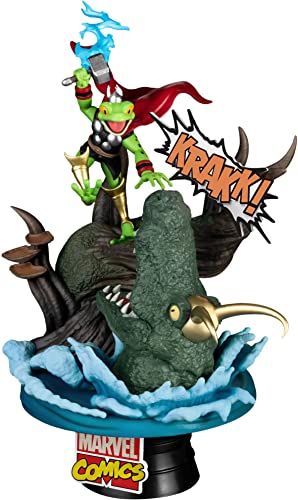Scar
Super Freak
I always enjoy your posts, Scar, and I agree with much of what you say. I don't think I'm quite as 'sheltered' as you might think though. I have a couple of cats who frequently drag in mice and proceed to skin and eviscerate them while still alive. And if I want an insight into how brutal nature is then it's easy enough to watch a first-hand demonstration of it. But neither would that be something I'd choose to have displayed on my desk. It's one thing to acknowledge the brutishness of survival and another to focus on it as a subject for aesthetic gratification. The illuminating and unique elements of dinosaurs for me are their physiological and evolutionary elements, not their savagery - just as my cats are not defined solely by their predatory viciousness. Ultimately, the decision to zone in on the act of killing may be contextually valid, but to relish the depiction of it is to me a prurience that runs counter to our more evolved sensibilities as empathetic beings. Finally it's a question of whether or not to engage with and confront those sensations: for me personally, I prefer not to. But then I'm the guy the Maquettes are for, right?
"When Animals Attack" is prurient because it misrepresents and decontextualizes predator ethology as something irrational and misdirected. What the Dinosauria dioramas do is depict predatory carnivores locked in the necessary struggles of survival, and that shouldn't repel a wildlife enthusiast, but bring forth a fascination for the true struggles that these animal must undergo to just go to bed with a full stomach, to ensure the survival of their young, and to perpetuate the existence of their species. Likewise herbivores are railing against being killed and devoured and have evolved to defenses to continue their own bloodlines. Capturing that struggle, immortalizing it in a tangible medium, is a snapshot of nature in its true unfettered ferocity.
And even if you, as a collector, were focusing on what drives the evolutionary morphology, it is the interaction of predator and prey and their relationships which force natural selection forward in the direction in which the animals have evolved. It's not a glorification of the aesthetics of killing, it's an illustration of why these animals look the way they do, what about their lifestyles drove their evolution towards their morphological characteristics, and how to illustrate that on a scale which captures, first-hand, the conflicts of the largest terrestrial organisms to have inhabited this planet.
Cats as a whole actually are, by definition, animals which are viewed as successful in an evolutionary sense precisely because they have been and continue to be efficient predators.
Certain people have the stomach for it, and others don't. That's fine. Heck when viewing file footage sometimes I'm the only one who remains focused on the screen throughout a kill. It's why we have a market for the more gruesome pieces as well as the relatively serene.
























